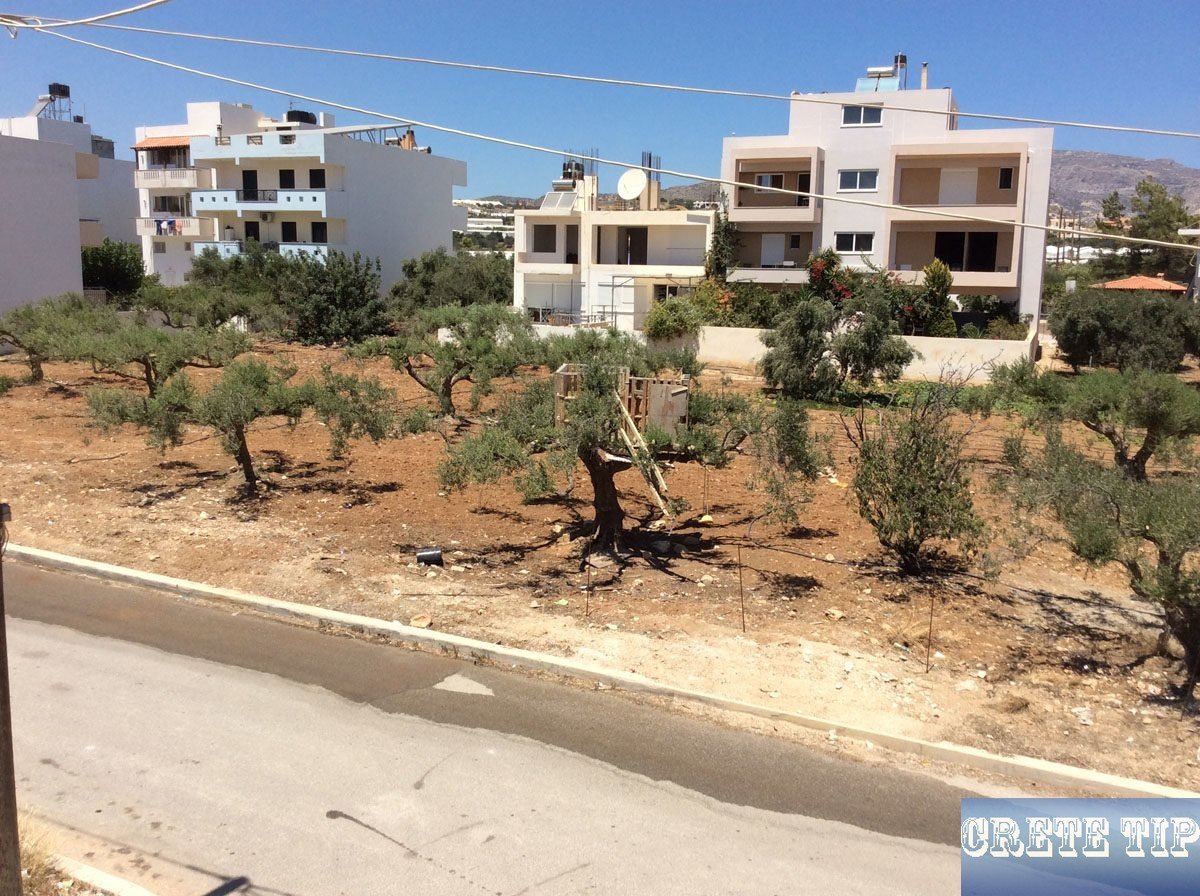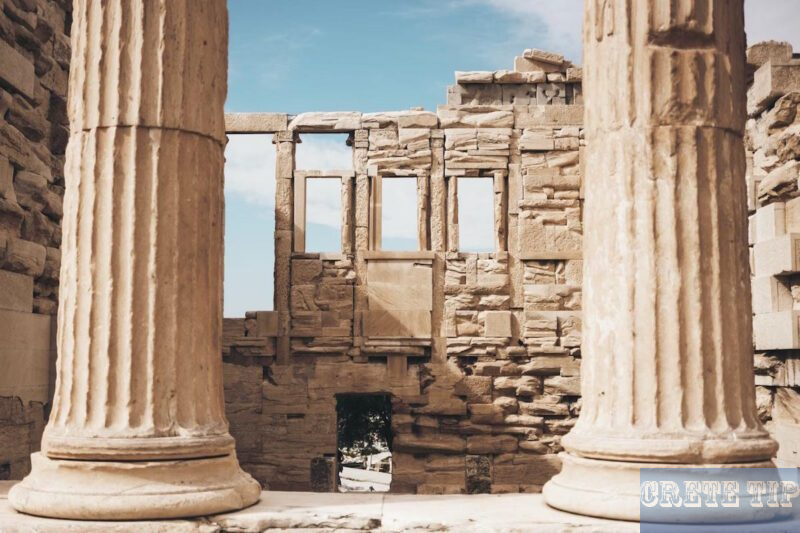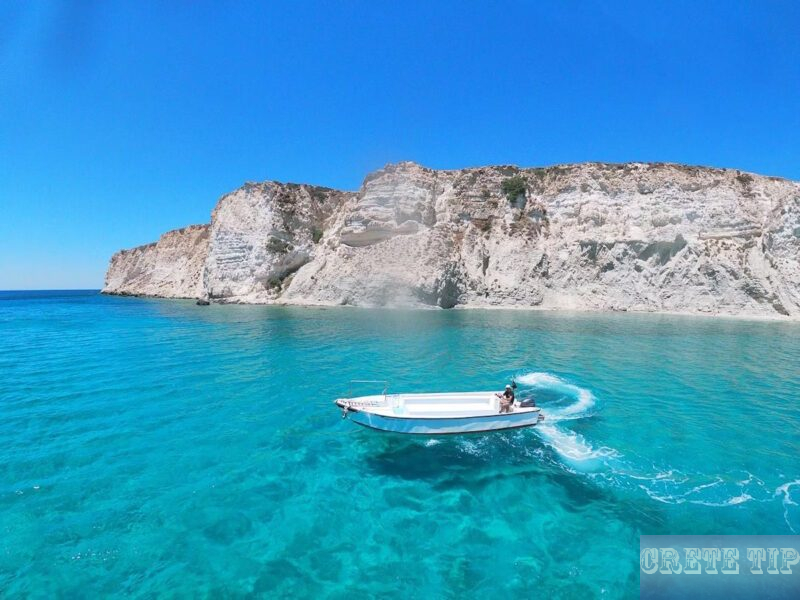A new boatload of migrants arrives on Crete every day: 2,183 arrivals so far this year, including three boats in the last 48 hours.

Regular Actions for Coast Guard Workers in Crete
“The personnel in the coast guard is exhausted”.
The coast guard personnel in both Eastern and Western Crete have reached their limits over the past year.
As the new tourist season approaches, they are faced with staffing shortages while trying to manage increasing responsibilities.
Recently, there was a significant surge in the number of migrant arrivals.
In a span of just two days, there were five incidents of migrants arriving on the island, including thirteen individuals who reached Arvi in the municipality of Viannos.
They were subsequently transferred for temporary accommodation in an old refrigeration building in Heraklion.
This situation arises despite repeated assurances from the last two Ministers of Migration, who had promised the establishment of temporary lodging facilities in Crete.
As of now, the local authorities, including the region of Crete and various mayors, await plans from the new Minister of Migration and Asylum, Makis Voridis.
The numbers regarding migration to Crete in 2025 highlight the ongoing pressure: in the first 2.5 months of the current year alone, 2,183 migrants have arrived on the island.
This heavy influx continues the trend from 2024, which saw a total of about 5,000 arrivals.
The region of Chania has notably shouldered the majority of the responsibility for managing and housing these migrants.
The coast guard workers, who handle a range of duties aside from migration, find themselves overwhelmed.
The process of receiving and aiding migrants demands considerable time and resources, ultimately impacting their regular operations.
With the impending tourist season, these workers are not only addressing the challenges brought by migrant arrivals but also managing the usual influx of tourists.
Many have expressed their concerns and are calling for a meeting with the newly appointed Minister of Maritime Affairs and Insular Policy and the newly elected Deputy Minister of Migration.
Their hope is that the authorities will pay special attention to the migration situation in Crete, addressing their primary requests for an increase in coast guard personnel and a redesigned strategy to manage the rising numbers effectively.
The personnel stress the need for reinforcements, citing that their workload has become unsustainable.
The coast guard’s responsibilities extend far beyond just dealing with migration, encompassing essential safety and navigation duties, especially as the tourist period begins.
The existing staff is feeling the strain, leading to calls for immediate action to bolster these vital services.
This situation paints a clear picture of the pressures faced by those tasked with ensuring the safety and well-being of both migrants and the broader community in Crete.
The balance between facilitating safe passage for those arriving on the island and maintaining regular operations during a busy tourist season is becoming increasingly difficult.
There is an urgent need for effective planning and support to manage these dual responsibilities without compromising the safety and efficiency of the coast guard services.
Third rescue of migrants within 48 hours today
A significant operation was conducted early in the morning by the Coast Guard in response to the discovery of migrant vessels.
In the Arvi area of the Municipality of Viannos, local residents spotted a group of migrants on the shore and promptly informed the authorities. Initial reports indicate that this group consists of thirteen individuals, including twelve men and one woman.
To ensure the safety of these individuals, the Coast Guard deployed various vessels to search the surrounding waters for any additional persons who may be at risk.
Concurrently, another segment of the operation was focused on rescuing forty-three migrants found aboard a boat approximately 23 nautical miles south of Gavdos.
The rescue efforts were coordinated by the Unified Centre for Search and Rescue of the Coast Guard, which played a crucial role in managing the operation.
A patrol vessel was sent to collect the migrants from the water and transport them safely to Agia Galini.
A new incident involving the arrival of migrants took place on the island of Gavdos early on Monday morning (17 March).
A boat carrying 47 individuals washed ashore at Trypiti Beach. Reports indicate that all of the passengers claim to originate from Sudan, and among them are two women.
The situation unfolded as follows:
- Total Rescued: 47 individuals
- Origin: Mainly from Sudan
- Women on Board: 2
Out of those rescued, 10 were transported by a Coast Guard vessel to the village of Sfakia.
From there, they were taken to Chania, where they are being accommodated at the Exhibition Centre in Ayia.
These individuals are in addition to the 43 migrants who were located earlier offshore Gavdos and taken to Agia Galini for shelter.
Current Status of the Migrants:
- Location of 10 Migrants: Exhibition Centre, Ayia
- Location of 43 Migrants: Agia Galini
- Remaining on Gavdos: 37 migrants
The remaining 37 individuals are still on Gavdos and will be transferred to Crete at a later time.
Their relocation depends on the weather conditions, which are currently unfavourable for such operations.
Weather conditions in the region can greatly affect the logistics and safety of rescue efforts.
The recurring instances of migrant landings on Gavdos highlight ongoing challenges faced by many people seeking safety and a better life.
The rescue operations are coordinated by local authorities and the Coast Guard, who respond rapidly to such events to ensure the safety of those aboard.
As conditions at sea can change rapidly, the Coast Guard remains vigilant.
Increased efforts to monitor the waters are essential, particularly as weather conditions improve, which can lead to more attempts to cross the sea.
The operation highlights the ongoing challenges faced in addressing migrant safety and the Coast Guard’s commitment to responding to such emergencies.
Local authorities have expressed concern about the frequency of these incidents, emphasising the need for continuous vigilance and support for migrant populations.
With many people attempting dangerous crossings, the collaboration between local residents and the Coast Guard has proven vital in alerting authorities about such sightings.
Efforts to manage and respond to the needs of migrants are ongoing.
The community’s involvement illustrates the important role that citizens can play in supporting rescue operations.
As the situation continues to evolve, these joint efforts will likely remain crucial in ensuring the safety of vulnerable individuals at sea.
There are various reasons that drive migrants to take such perilous journeys, including conflict, persecution, and economic challenges in their home countries.
The perilous nature of these crossings necessitates comprehensive support systems to protect those who embark on such journeys.
In addition to immediate rescue efforts, longer-term strategies are essential for addressing the root causes of migration.
International cooperation and local support mechanisms must be enhanced to provide sustainable solutions for migrants.
These goals are fundamental in reducing the number of people risking their lives at sea.
As the Coast Guard continues to engage in rescue missions, awareness around migrant issues is becoming increasingly important.
The dual rescue operation underscores the urgent need for effective policies and humanitarian responses to support individuals facing hardship.
Local and international organisations are encouraged to collaborate closely to develop robust frameworks for migrant assistance.
This could involve providing safe passage, shelter, and other essential services for those in need, helping to alleviate some of the pressures faced by both migrants and the communities involved.
It is equally important to foster awareness and understanding within the general population about the challenges confronting migrants.
Educating communities can lead to enhanced empathy and support for ongoing initiatives aimed at helping vulnerable groups.
Furthermore, as the Coast Guard continues its critical work in rescuing individuals at sea, they rely heavily on accurate reporting and immediate communication from residents.
The synergy between the community and the authorities serves as a vital lifeline for many individuals who find themselves in perilous situations.
Regular updates and operational reports from the Coast Guard can help sustain public interest and support around these issues.
Ensuring that the community remains informed fosters engagement and compassion, ultimately enhancing the efficacy of rescue operations.
Through well-coordinated efforts and a strong community response, there is hope for creating a more supportive environment for migrants facing difficult circumstances.
The collaboration between the Coast Guard and local populations serves as a model for addressing migration challenges, emphasising that together, solutions can be developed.
The recent operations have drawn attention to the pressing need for humanitarian organisations and government bodies to come together in addressing these complexities.
By focusing on holistic approaches, the situation for migrants can be improved considerably.
As the Coast Guard works tirelessly on the front lines of these rescue missions, their unwavering dedication is commendable.
It is a reminder of the essential services that exist to protect those at sea and offer hope to migrants seeking safety and a better future.
Authorities and communities must learn from past experiences to refine their strategies and responses.
In an age where migration issues are prevalent, proactive measures can transform the landscape of support available to those navigating uncertainty.
Frequently Asked Questions
What actions are being taken to manage the arrival of migrant boats in Crete?
Authorities in Crete are increasing patrols along coastal areas to monitor and intercept migrant boats.
They are also enhancing collaboration with various agencies to ensure effective response measures are in place. Furthermore, there is a focus on improving reception facilities to accommodate new arrivals more efficiently.
What assistance is provided to migrants who reach Crete?
Upon arrival, migrants have access to various support services, including basic healthcare, legal assistance, and food supplies.
Local NGOs and government agencies work together to provide essential needs and guidance for those seeking asylum. Temporary shelters are also available to house newcomers.
How do residents in Crete feel about the influx of migrants?
The local response varies, with some residents expressing sympathy and support for the migrants, while others have concerns about the impact on resources and community safety.
Community organisations often play a role in promoting understanding and solidarity between locals and migrants.
What difficulties do officials face in handling migrant arrivals in Crete?
Authorities encounter several challenges, including limited resources and facilities to support the increasing number of migrants.
There are also legal complexities concerning asylum procedures, which can delay processing. Additionally, local opposition can create further hurdles in implementing effective management strategies.
How are international regulations regarding asylum seekers being observed in Crete?
Crete endeavours to adhere to international laws related to asylum seekers by ensuring that migrants are treated according to established human rights standards.
This includes assessing claims for asylum fairly and providing legal recourse for those who wish to appeal decisions made regarding their status.
What are the broader implications of the migrant situation in Crete for EU migration policies?
The situation in Crete reflects larger trends within the European Union regarding migration and asylum policies.
It raises questions about the effectiveness of current EU frameworks in managing migration flows.
It also highlights the need for cohesive multi-country responses to address such humanitarian challenges collectively.





